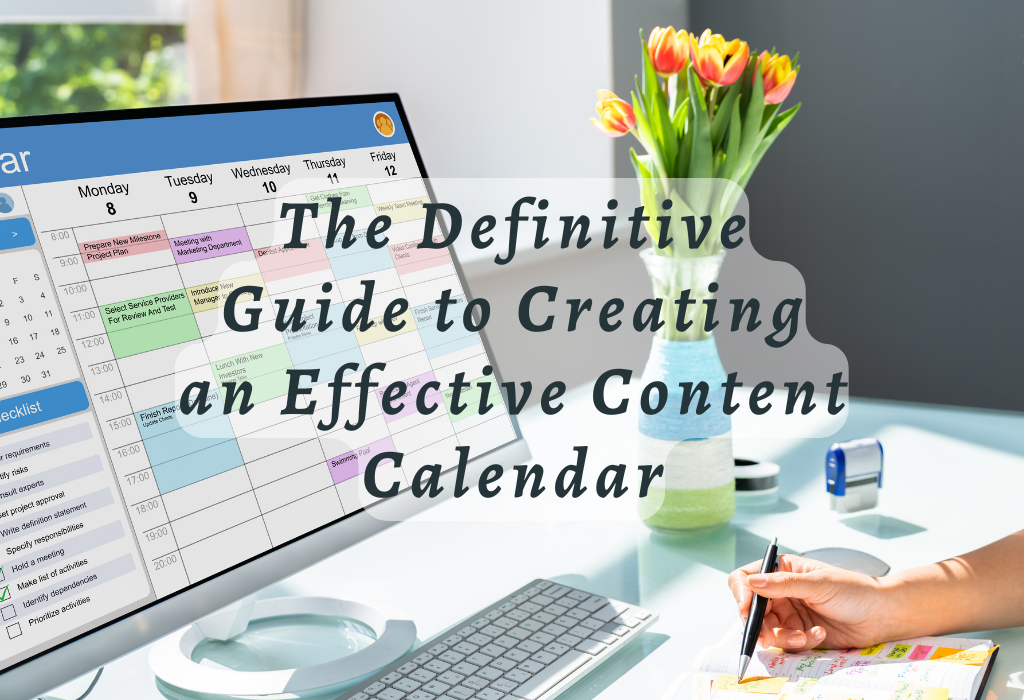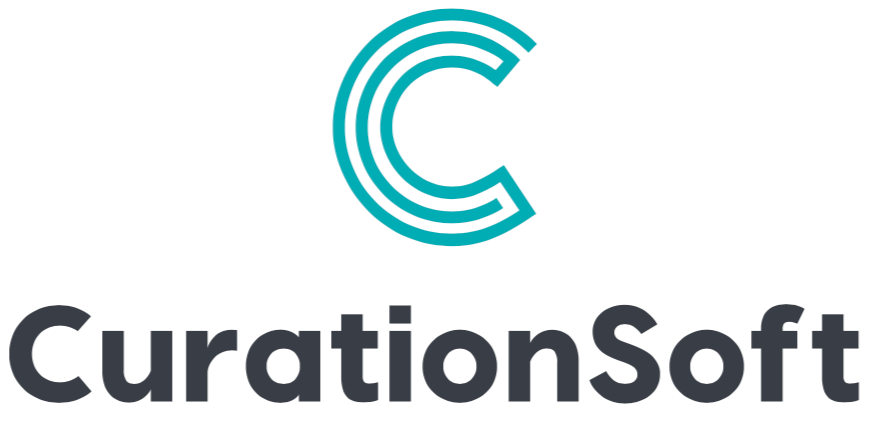The Definitive Guide to Creating an Effective Content Calendar
Are you looking for an effective way to keep your content organized and track your progress? A content calendar is a great tool to help you do this. This article will cover the basics of content calendars, the benefits of creating one, and how to create an effective content calendar. We will also provide best practices, tips for optimizing your content calendar, and content calendar templates.
Content calendars are essential for marketers to create, publish and promote content promptly. A content calendar provides structure and clarity to plan and maximize your time more effectively. Content marketing is about making the right kind of engaging content at the right time – but how do you ensure your target audience sees it?

What is a Content Calendar?
A content calendar is an organized way to plan, schedule, and track your content. It is a tool that helps you stay organized, on schedule, and on-topic with your content. Content calendars are used by content creators, marketers, and other professionals responsible for creating content for their businesses or organization.
Content types like blog posts, social media posts, email newsletters, and website content are typically organized by content calendars that can also track performance metrics, such as engagement and reach.
Benefits of Using a Content Calendar
Creating a content calendar has several key benefits. First, it helps you stay organized. By planning and scheduling your content in advance, you can ensure that you are always on schedule and on-topic with your content. Second, a content calendar helps you track performance metrics. By monitoring your content performance, you can identify which content is performing well and which needs improvement. Third, a content calendar helps you save time. Planning and scheduling your content in advance can save time and energy spent creating content on the fly.
How to Create an Effective Content Calendar
Creating an effective content calendar is simple, but there are a few key steps that you should follow. We will cover these steps in more detail in the following sections.
The first step in creating an effective content calendar is identifying your content goals. What do you want to accomplish with your content? Do you want to increase website traffic, drive sales, or engage your audience? Identifying your content goals will help you determine the types of content you should be creating and the topics you should focus on.
Once you have identified your content goals, the next step is to choose a suitable content calendar template. Several different content calendar templates are available, such as monthly, weekly, and daily templates. Depending on the type of content you are creating, you may need to use a different content calendar template.
The next step is to gather the content you will use in your content calendar. This includes blog posts, social media posts, email newsletters, and any other content you plan to create. You should also have any content that you are using from outside sources, such as articles, videos, and images.
Once you have gathered your content, the next step is to schedule it. You should start by creating a monthly content calendar. This will help you plan out your content for the entire month. Once you have created a monthly content calendar, you can start filling in the details with weekly and daily content calendars.
The last step in creating an effective content calendar is to monitor and track your content performance. This can be done by following engagement, reach, and website traffic metrics. By monitoring and tracking your content performance, you can identify which content is performing well and which needs improvement.
Tips For Creating An Effective Content Calendar
Creating an effective content calendar is an essential part of content marketing. A content calendar helps you plan, organize, and track your content creation and publication schedule. Here are some tips to help you create an effective content calendar:
1. Set your goals: Before you begin creating your content calendar, take the time to define your goals. It will help you determine what content you should create and when to publish it.
2. Create a timeline: Determine the length of your content calendar. A content calendar typically covers a month, a quarter, or even a year.
3. Identify topics: Brainstorm and identify issues related to your content goals. This will help you have something to write about for every content piece.
4. Set deadlines: Set deadlines for each piece of content. This will ensure that your content is timely and relevant.
5. Track progress: Keep track of the progress of your content calendar. This will help you stay on top of your content goals and ensure that your content is published on time.
Tools And Templates for Creating a Content Calendar
Creating a content calendar is a great way to stay organized, plan, and ensure that you are consistently producing high-quality content. You can make the process easier and more efficient with the right tools.
Here are some of the best options available for creating content calendars:
1. Google Sheets: This is an excellent option for those looking for a free, straightforward spreadsheet solution to create their content calendar. You can easily customize the columns and rows to reflect your content plan and easily collaborate with others.
2. Trello: This is an excellent option for those who need a more visual approach to plan their content. Trello boards allow you to stay organized and view all upcoming projects in one easy-to-navigate location.
3. CoSchedule: This popular premium calendar solution allows you to manage your content, marketing campaigns, and social media all in one place. It includes plenty of features, such as drag-and-drop functionality, automated scheduling, and integrations with other online tools.
4. Microsoft Excel: Excel is another excellent option for creating a content calendar. It is a powerful program that allows you to easily customize your calendar and track progress.
No matter which tool you choose, it’s vital that you find a solution that works for you and your team. With the right tools and templates, you can create an effective content calendar that will help you stay organized and ensure your content is consistent and high-quality.
Best Practices for Promoting Your Content
Promoting your content is an essential part of any successful content marketing strategy. It’s crucial to reach the right people with the right message to maximize engagement and ROI. Here are some best practices for promoting your content:
1. Utilize Social Media Platforms: Social media platforms such as Twitter, Instagram, and Facebook are great ways to promote your content quickly and easily. Make sure you use relevant hashtags so that your posts can be seen by more people who may be interested in what you have to say. Additionally, consider boosting or sponsoring posts on these platforms if appropriate for a more significant reach.
2. Leverage Email Marketing Campaigns: Email campaigns are a great way to get your content out there and engage with potential customers or clients directly. You can create targeted email lists based on demographics or interests so that you know precisely who will receive each message from you – this ensures that only those most likely to be interested in what you offer will see it.
3. Consider Paid Advertising Campaigns: If budget allows, paid advertising campaigns can help boost the visibility of certain pieces of content – especially when targeting specific audiences using precise demographic data like age, gender, location, etc. This type of campaign should always be used strategically; make sure that the ad copy is clear and concise so as not to confuse viewers about what they’re seeing/clicking on.
4 . Monitor Performance Metrics: After launching any promotion efforts, keep track of how well they’re performing by monitoring key performance metrics such as impressions, clicks, conversions, etc. This will allow you to determine which strategies work best for reaching different types of audiences and adjust accordingly if needed.
5. Remember Older Pieces: Re-promoting old but still relevant blog posts or other digital assets can help drive new traffic while also helping establish yourself as an authority within the industry. Just remember to do it sparingly; no one likes feeling spammed.
By understanding and utilizing the best practices for promoting your content, you can ensure that your content calendar is successful and reach its maximum potential. Let’s now look at how to measure the success of your content calendar.
Measuring the Success of Your Content Calendar
Content calendars are essential for any business. They help ensure that you are providing quality content consistently, as well as track its success. But how do you measure the success of your content calendar?
✓ Tracking Reach
The first step is to track the reach of your content. This can be done through analytics tools like Google Analytics or other reporting software. These tools will give you an idea of how many people are viewing your content, which can help you understand the reach of your content calendar.
✓ User Engagement
You can also measure the impact of your content by looking at user engagement. You can determine if your content resonates with your audience by tracking the number of comments and interactions. This is especially important for content calendars focused on social media platforms, as this allows you to see how many people are responding to and sharing your content.
✓ Track Conversions
Another way to measure the success of your content calendar is to track conversions. This could include monitoring link clicks, downloads, or other actions that help to move prospective customers toward a purchase. By tracking conversions, you can understand how effectively your content drives a desired outcome.
✓ ROI
Finally, you can measure the success of your content calendar by looking at the return on investment (ROI). This is an essential metric for any business, as it helps to put an exact measure on the success of your content calendar. By tracking the time, money, and energy invested in creating content, you can ensure that you are getting a positive return on your investment.
Measuring the success of your content calendar is an essential part of content marketing. By using analytics tools, tracking user engagement, conversions, and measuring ROI, you can ensure that your content calendar has the desired impact.
FAQs with Content Calendar
Conclusion
It helps you plan, stay organized, and ensure that your content reaches the right audience at the right time. With the help of tools and templates available online, it’s easy to create a comprehensive content calendar to ensure your efforts are focused on producing quality content that resonates with your target audience. By following best practices for promoting your content and measuring its success through analytics, you can optimize your content calendar to get maximum results from your hard work.
Are you looking for an effective content marketing and SEO strategy? Look no further than curationsoft! Our content calendar solution is designed to help you plan, organize, and manage your website’s content to maximize visibility and drive organic traffic from search engines. With our user-friendly platform, creating a successful online presence has never been easier – so don’t wait any longer – start using curation-soft today!






